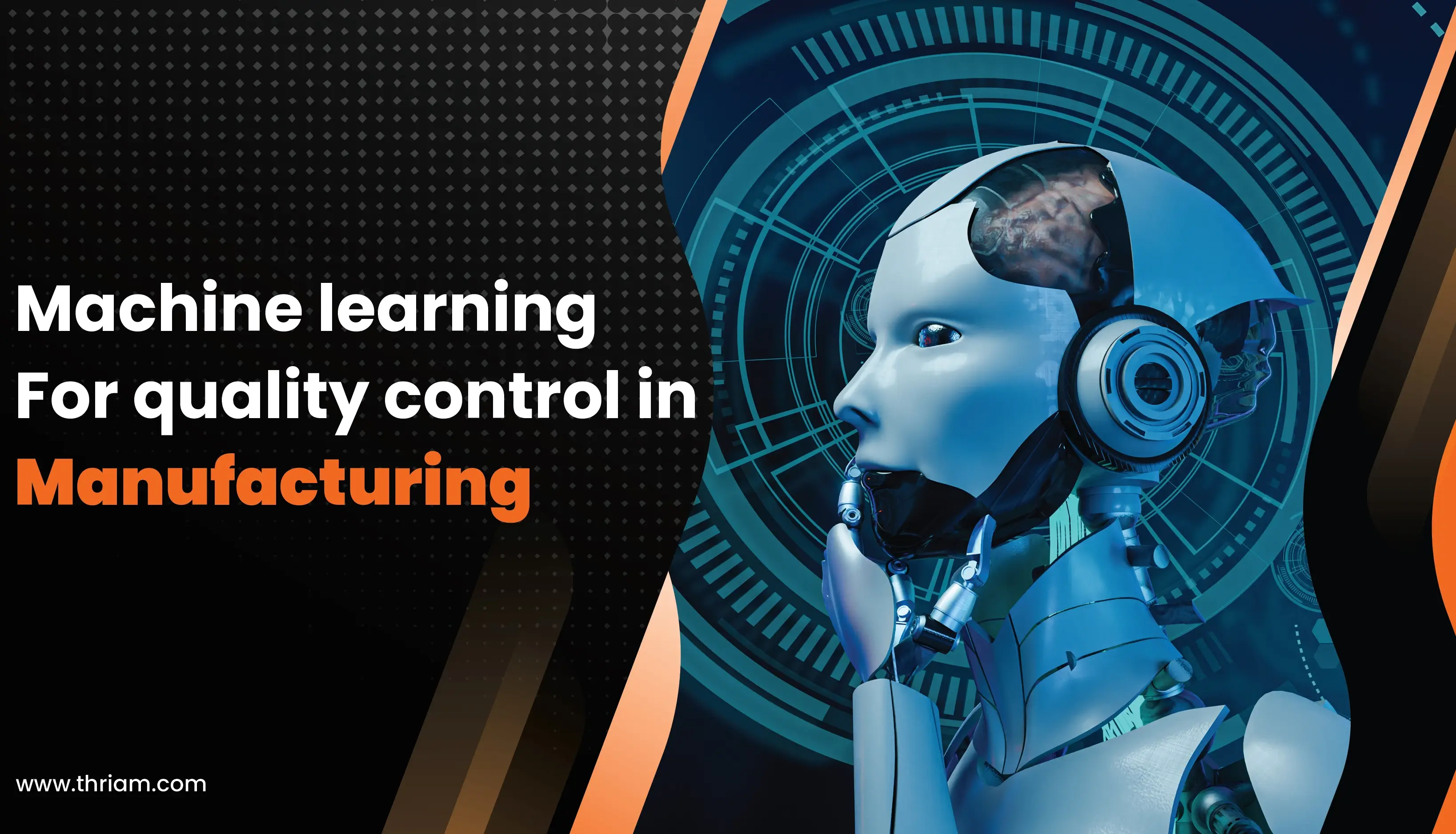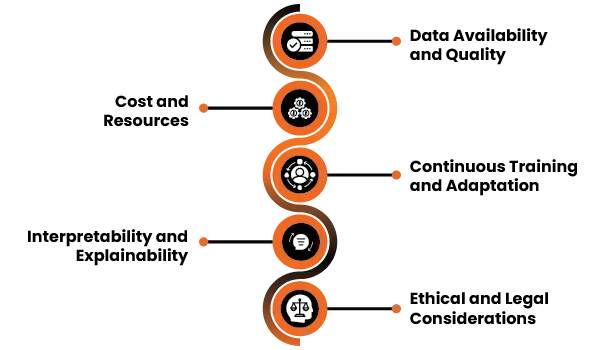Machine Learning's Impact: Revolutionizing Quality Control in Manufacturing

Quality control plays a crucial role in manufacturing, ensuring that products meet the desired standards and meet customer expectations. As technology continues to advance, machine learning has emerged as a powerful tool to revolutionize quality control processes. By harnessing the power of data and algorithms, machine learning enables manufacturing companies to improve efficiency, accuracy, and overall quality control measures.
Traditional Approaches to Quality Control in Manufacturing
In the past, quality control in manufacturing relied heavily on manual inspection and statistical analysis techniques. However, these approaches had their limitations. They were time-consuming, subjective, and prone to human error. The introduction of machine learning algorithms has transformed the traditional methods and paved the way for more efficient and accurate quality control processes.
Introduction to Machine Learning
Machine learning is a subset of artificial intelligence that involves the development of algorithms that enable computers to learn and make predictions or decisions based on data. It can identify patterns, detect anomalies, and make accurate predictions. By using machine learning, manufacturers can leverage large amounts of data collected from various sources and improve the quality control process.
Machine Learning Applications in Quality Control
Machine learning has various applications in quality control in manufacturing. One key application is defect detection and classification. By training machine learning algorithms on vast datasets that include both defective and non-defective products, manufacturers can automate the detection and classification of defects, reducing human error and improving efficiency.
Another application is predictive maintenance. By analyzing sensor data from machinery and equipment, machine learning algorithms can detect patterns indicative of potential failures. This allows manufacturers to schedule maintenance proactively, reducing production downtime and improving overall equipment effectiveness.
Moreover, machine learning can optimize manufacturing processes to improve quality control. By analyzing data from multiple sources, including supplier data and production data, machine learning algorithms can identify variables that affect product quality. This enables manufacturers to make data-driven decisions and improve their production processes.
Benefits and Challenges of Machine Learning in Quality Control
The integration of machine learning in quality control brings numerous benefits. It improves accuracy by eliminating human error. It enhances efficiency by automating tedious tasks and streamlining the decision-making process. It also enables real-time monitoring and predictive capabilities, reducing costs associated with defective products and downtime.
However, there are challenges associated with implementing machine learning in quality control. Manufacturers must have access to large, high-quality datasets to train the algorithms effectively. Additionally, there is a need for continuous improvement, as machine learning models must adapt to changes in production processes and new types of defects.
Benefits:

-
Improved Accuracy
Machine learning algorithms can analyze massive datasets and identify patterns that may be difficult for humans to detect. By accurately identifying defects or abnormalities in manufacturing processes, machine learning improves the accuracy of quality control. This leads to a reduction in false positives and false negatives, ultimately increasing the overall quality of the products. -
Enhanced Efficiency
Automating quality control processes through machine learning reduces manual labor and streamlines decision-making. With the ability to process and analyze large volumes of data in real-time, machine learning algorithms can quickly identify potential issues and take corrective actions. This improves efficiency by minimizing downtime and allowing manufacturers to address quality control concerns promptly. -
Predictive Maintenance
Machine learning algorithms can analyze sensor data to predict equipment failures. By identifying patterns and anomalies, manufacturers can schedule maintenance proactively, reducing unplanned downtime and improving overall equipment effectiveness. This results in cost savings and improved production efficiency. -
Data-Driven Decision Making
Machine learning enables data-driven decision-making by providing valuable insights for quality control. By analyzing vast amounts of data, including production data, supplier data, and customer feedback, manufacturers can make informed decisions to optimize their processes and enhance product quality. This results in more effective resource allocation and improved overall quality control. -
Real-Time Monitoring
Machine learning algorithms can continuously monitor manufacturing processes in real-time, allowing for immediate detection of anomalies or defects. By providing real-time insights, manufacturers can take corrective actions promptly and prevent defective products from entering the market. Real-time monitoring also enables faster response to any deviations from quality standards, minimizing the potential impact on production.
Challenges:

-
Data Availability and Quality
Implementing machine learning in quality control requires access to large, high-quality datasets. Limited or inadequate data can impact the accuracy and effectiveness of machine learning algorithms. Manufacturers need to ensure that relevant and reliable data is collected and properly labeled to train the algorithms effectively. -
Cost and Resources
Machine learning implementation may require significant resources, including the infrastructure to handle and process large amounts of data, as well as specialized expertise to develop and maintain the algorithms. The costs associated with acquiring and maintaining these resources can be a challenge for some organizations, particularly smaller manufacturers. -
Continuous Training and Adaptation
Machine learning models need continuous training and updating to adapt to changing production processes, new types of defects, or shifts in customer requirements. This requires ongoing efforts to collect and label data, retrain the models, and ensure that the algorithms remain accurate and effective over time. -
Interpretability and Explainability
While machine learning algorithms excel at identifying patterns and making predictions, they can be perceived as black boxes, making it difficult to understand and interpret the decision-making process. This lack of interpretability can be a challenge in quality control, as manufacturers need to justify and explain the decisions made by the algorithms, especially in cases of customer complaints or audits. -
Ethical and Legal Considerations
Machine learning systems rely on the data they are trained on, and any biases or inaccuracies in the data can impact the fairness and legality of the decisions made. Ensuring ethical and legal compliance in quality control processes requires careful consideration of the potential biases in the data and the accountability of the algorithmic decisions.
Conclusion
Machine learning is set to continue revolutionizing quality control in manufacturing. As technology advances and the availability of data grows, machine learning algorithms will become even more sophisticated, enabling manufacturers to enhance their quality control processes further.
Machine learning has emerged as a game-changer for quality control in manufacturing. By automating defect detection, enabling predictive maintenance, and optimizing manufacturing processes, machine learning revolutionizes the way manufacturers ensure quality. As more companies embrace this technology, the manufacturing industry will experience increased efficiency, reduced costs, and improved overall quality control.



